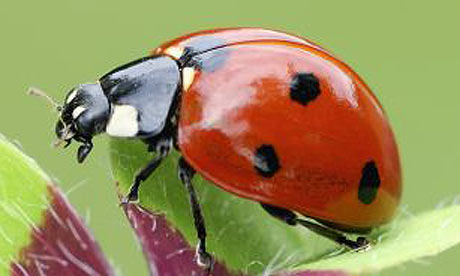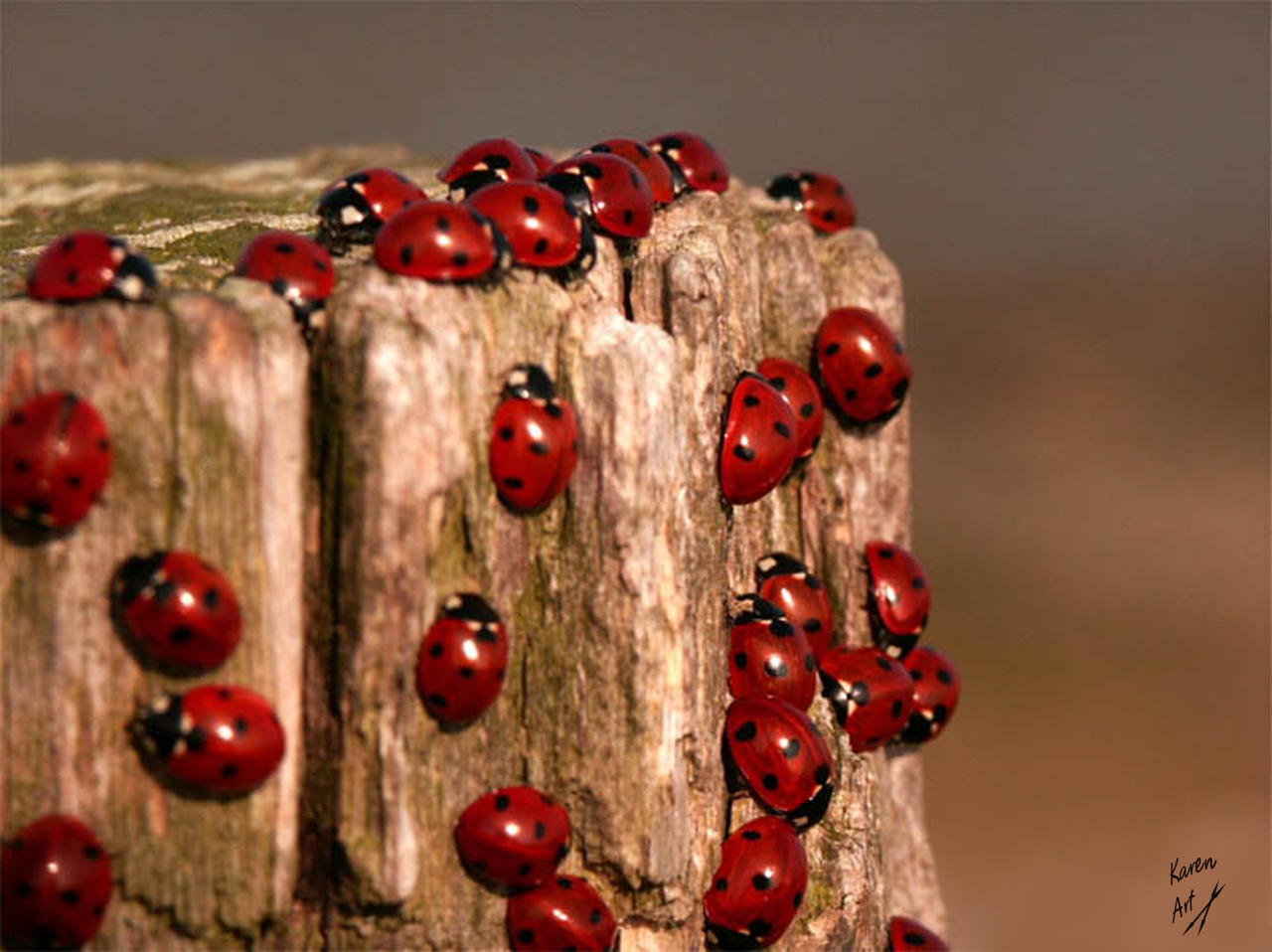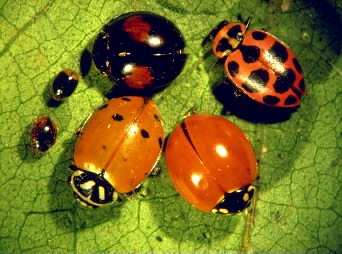 Coccinellidae is a family of beetles, known variously as ladybirds (UK, Ireland, Australia, Sri Lanka, Pakistan, South Africa, New Zealand, India, Malta, some parts of Canada and the US), or ladybugs (North America). Scientists increasingly prefer the namesladybird beetles or lady beetles as these insects are not true bugs. Lesser-used names include God's cow, ladyclock, lady cow, and lady fly.
Coccinellidae is a family of beetles, known variously as ladybirds (UK, Ireland, Australia, Sri Lanka, Pakistan, South Africa, New Zealand, India, Malta, some parts of Canada and the US), or ladybugs (North America). Scientists increasingly prefer the namesladybird beetles or lady beetles as these insects are not true bugs. Lesser-used names include God's cow, ladyclock, lady cow, and lady fly.Coccinellids are small insects, ranging from 1 mm to 10 mm (0.04 to 0.4 inches), and are commonly yellow, orange, or scarlet with small black spots on their wing covers, with black legs, head and antennae. A very large number of coccinellid species are mostly, or entirely, black, grey, or brown and may be difficult for non-entomologists to recognize as coccinellids. Conversely, there are many small beetles that are easily mistaken for coccinellids, such as the tortoise beetles.
Coccinellids are found worldwide, with over 5,000 species described more than 450 native to North America alone.
| PARTS OF LADYBIRDS. |
A few species are considered pests in North America and Europe, but they are generally considered useful insects as many species feed on aphids or scale insects, which are pests in gardens, agricultural fields, orchards, and similar places. Harmonia axyridis (or the Harlequin ladybug) was introduced into North America from Asia in 1988 to control aphids but is now the most common species as it is out-competing many of the native species. It has since spread to much of western Europe, reaching the UK in 2004.
A common myth is that the number of spots on the insect's back indicates its age.
The name "ladybird" originated in Britain where the insects became known as "Our Lady's bird" or the "Lady beetle".Mary (Our Lady) was often depicted wearing a red cloak in early paintings and the spots of the seven spot ladybird (the most common in Europe) were said to symbolise her seven joys and seven sorrows. In the United States the name was adapted to "ladybug".
Common names in other European languages have the same association (the German name Marienkäfer translates to "Marybeetle" or, literally, Mary-chafer).
 |
| A HUGE GROUP OF LADY BIRDS CLIMBING A BROKEN TREE. SEE HOW THEY ARE LIVING IN PEACE. |
The Dutch name "Lieveheersbeestje" and the colloquial French name "Bête à bon Dieu" mean "Our Lord's animal". The name "God's cow" is a literal translation from Irish "Boin Dé", which is probably a corruption of the French name.
In the United States, Coccinellids usually begin to appear indoors in the fall. They leave their summer feeding sites in fields, forests and yards looking for a place to spend the winter. Typically when temperatures warm to the mid-60s Fahrenheit in the late afternoon, following a period of cooler weather, they will swarm onto or into buildings illuminated by the sun. Swarms of Coccinellids fly to buildings in September through November depending on location and weather conditions. Also, homes or buildings near fields or woods are more prone to infestation.
 |
| COLORFUL LADY BIRDS. |
The presence of Coccinellids in grape harvests can cause ladybird taint in wines produced from the grapes.
After an abnormally long period of hot dry weather in the Summer of 1976 in the UK, there was a marked increase in the aphid population followed by a "plague" of Coccinellids, with many reports of people being bitten as the supply of aphids dwindled.Recent studies suggest that Coccinellids can also cause allergic reactions, such as eye irritation or asthma.The ladybird was immortalized in the still-popular children's nursery rhyme Ladybird, Ladybird:
Ladybird, ladybird, fly away home
Your house is on fire and your children are gone
All except one, and that's Little Anne
For she has crept under the warming pan
excellent... keep up the good work nanga :)
ReplyDelete